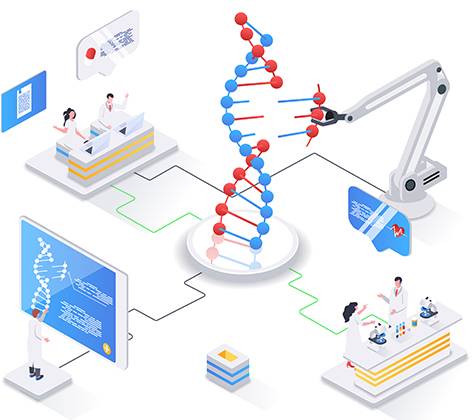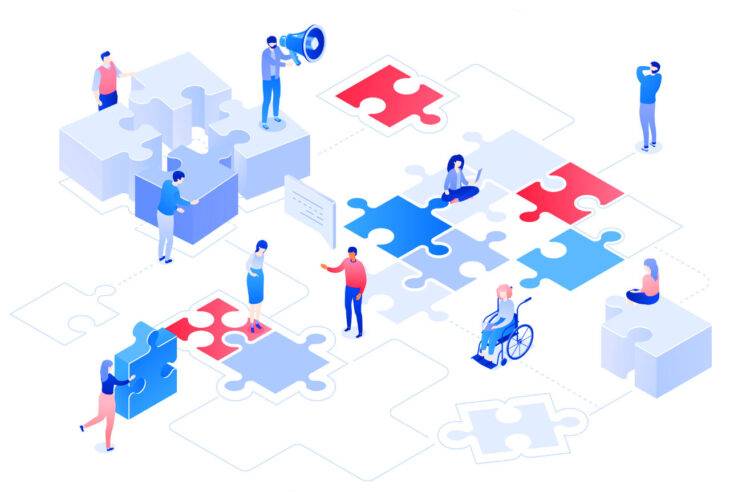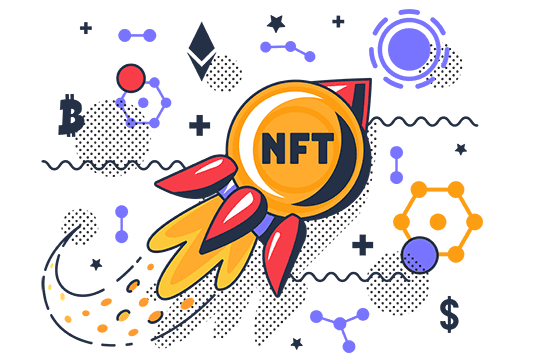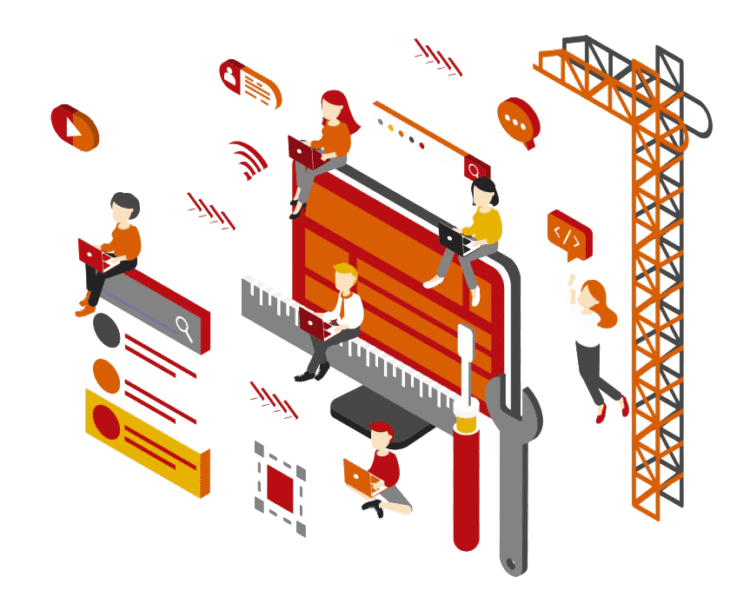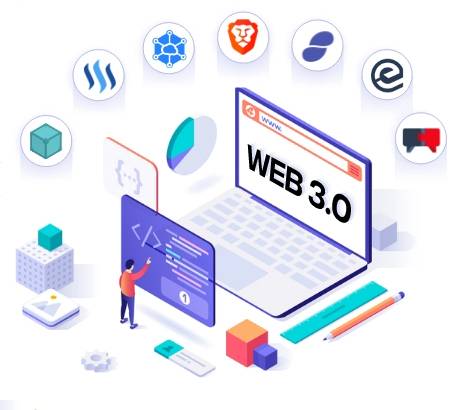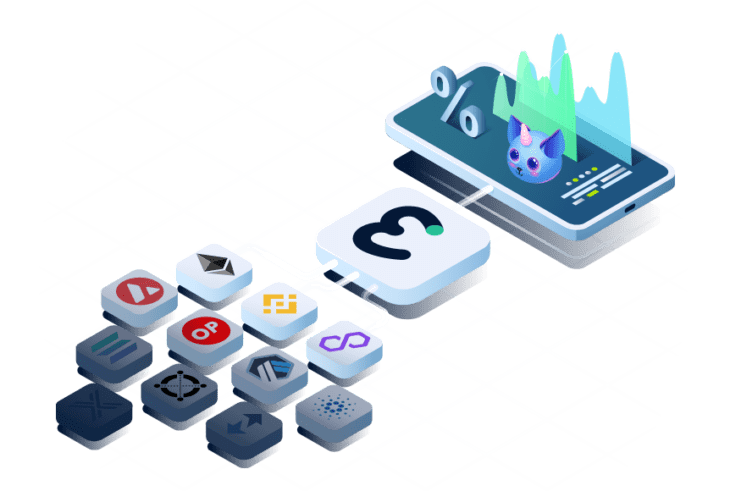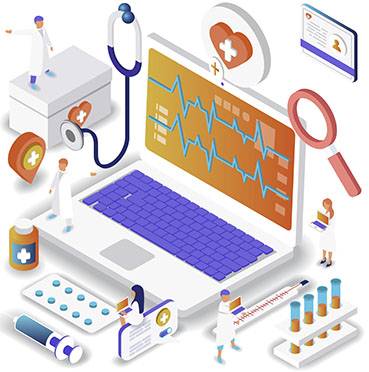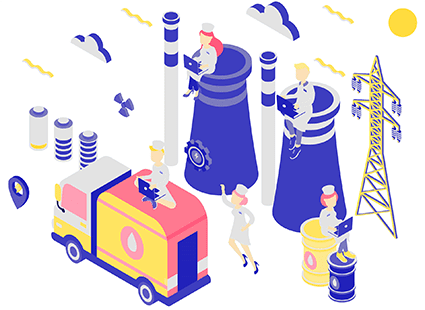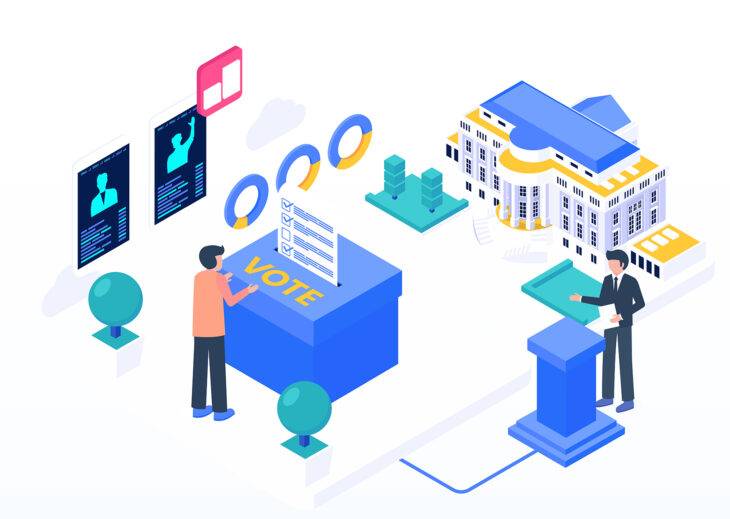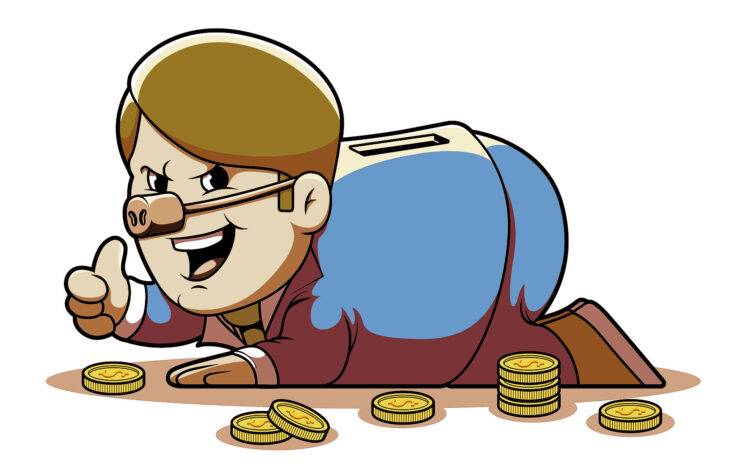It is estimated that developed countries spend approximately 20% of their GDP on healthcare. If that statistic wasn’t shocking enough, remember that the industry is already afflicted by skyrocketing healthcare rates, outdated procedures, and frequent privacy breaches. These (expensive) challenges are pushing a trend for greater productivity and creativity, enter Blockchain in healthcare.
Healthcare Blockchain Applications
In healthcare, Blockchain has a wide variety of implementations and uses. The distributed ledger technology allows the seamless transmission of patient medical information, controls the drug supply chain, and helps healthcare experts decipher genetic code.
Blockchain has the power to relieve several healthcare industry frictions by deflating the existing spending bubble, securing patient privacy, and transforming the overall healthcare experience. The platform is now being used to do everything from safely encrypting patient records to handling epidemic outbreaks. And at least one country sees blockchain healthcare as having tremendous potential: Estonia.
Estonia, a member of the EU, has the size of Tennessee with a population of 1 340 415 people, started using blockchain technologies to encrypt healthcare data and conducted transactions in 2012. All healthcare billing in Estonia is now done via Blockchain; 95% of health information and 99 percent of all drug information is powered by Blockchain technology.
Patient Data Security
It’s not surprising that keeping private medical data secure is the most common application for blockchain technology right now. In the healthcare sector, security is a big concern. More than 176 million health records were compromised in data breaches between 2009 and 2020. Cybercriminals stole credit cards, bank and health information, as well as genomic research data.
Blockchain’s capacity to retain an incorruptible, decentralized and open log of all patient data makes it a technology ripe for security applications. Furthermore, while Blockchain is open, it is also confidential, concealing any individual’s identity with complicated and protected codes capable of protecting medical details’ sensitivity. The technology’s decentralized architecture further enables patients, physicians, and healthcare professionals to share the same information quickly and securely.
Four initiatives using Blockchain for patient data security
Industry: Big Data, Software, and Cybersecurity
BurstIQ’s software enables healthcare organizations to handle vast patient data volumes safely and stably. Its blockchain platform allows the safekeeping, licensing or selling, and sharing data when adhering to HIPAA regulations.
Blockchain application: The organization is using Blockchain to improve the exchange and utilization of medical data.
Real-world impact: BurstIQ’s platform contains complete and up-to-date information about patients’ wellbeing and healthcare activity. It can aid in the prevention of opioid or other prescription drug abuse.
Industry: IT (Information Technology), Business Applications
Factom provides products that support the healthcare community in safely maintaining digital documents on its blockchain network, which is only open to hospitals and healthcare administrators. Physical papers can be outfitted with special Factom encryption chips that store information about a patient as private details that only approved individuals can view.
Blockchain application: It uses blockchain technologies to store digital health information safely.
Real-world application: In June 2019, Factom obtained an approximately $200,000 grant from the United States Department of Homeland Security to test a platform to incorporate safe data from Border Patrol cameras and sensors to understand better the impacts of Blockchain in “a practical field environment.”
Industry: Medical electronic health record.
Medicalchain’s Blockchain protects the confidentiality of health data by providing a centralized source of truth. Doctors, hospitals, and labs can request medical information that is traceable and preserves the patient’s privacy from prying eyes.
Blockchain application: The blockchain-based network used by Medicalchain holds a database of origin and preserves patient identification.
Real-world application: In May of 2019, Medicalchain announced the launch of MyClinic.com. MyClinic, a telemedicine website, allows patients to video meet with their physicians and pay for such appointments with “MedTokens.”
Industry: Blockchain and Cybersecurity.
Guardtime assists healthcare organizations and policymakers in incorporating Blockchain into their cybersecurity strategies. The organization was instrumental in bringing Blockchain to Estonia’s healthcare systems. It also reached an agreement with a private healthcare provider in the United Arab Emirates to add Blockchain to its data protection systems.
Blockchain application: Guardtime uses Blockchain for encryption and healthcare applications.
Real-world application: Guardtime recently collaborated with Verizon Enterprise Solutions to launch multiple platform offerings built on Guardtime’s Keyless Signature Infrastructure (KSI) Blockchain.
Blockchain medical records have the potential to simplify care and prevent expensive mistakes.
Miscommunication among medical professionals costs the healthcare industry an estimated $11 billion a year. Obtaining access to a patient’s medical history takes time, depleting personnel services and slowing patient treatment. Blockchain-based medical records can provide a solution to these problems.
Since the technology is decentralized, it provides a single ecosystem of medical records that can be quickly and effectively referenced by physicians, clinics, pharmacists, and everyone else involved in a patient’s care. As a result, Blockchain could lead to quicker diagnosis and more tailored treatment plans.
Four initiatives using blockchain medical records to build shared accounts and customized health plans.
Industry: AI, Cloud, Blockchain Business Apps, and Personal Wellbeing.
Tamarin Health makes decentralized technologies accessible to the healthcare sector. Its wellness portal is an open-sourcing database that helps healthcare providers to view relevant information about a patient in the Blockchain. Open access to critical patient records allows healthcare practitioners to direct medical efforts faster than conventional approaches.
Blockchain application: Tamarin Health uses Blockchain to build an open-source database that healthcare providers can use to view patient records and manage treatment.
Real-world impact: Tamarin Health recently formed a Global Healthcare Blockchain Alliance with Shivom, an end-to-end bioinformatics platform, to secure DNA sequencing data using blockchain encryption.
Industry: Healthcare, Blockchain, and IT.
Coral Health uses Blockchain to boost health conditions by speeding up the treatment process, automating regulatory procedures, and accelerating the care process. By deploying medical data into distributed ledger technology, the organization integrates physicians, scientists, lab technicians, and public health agencies more efficiently than ever before. Coral Health also uses smart contracts between patients and healthcare providers to ensure the accuracy of results and therapies.
Blockchain application: Coral Health’s blockchain platform accelerates treatment, automates logistical procedures, and uses smart contracts for patients and physicians.
Real-world application: According to Coral’s chief marketing officer Jeremy Mullin, the organization is exploring the use of a blockchain and the Smart on FHIR protocol “to allow patients to monitor their own health files.”
Industry: Medicine and Blockchain.
Robomed incorporates artificial intelligence and Blockchain to provide patients with a single point of care. The organization uses chatbots, portable diagnostic equipment, and telemedicine sessions to capture patient information and share it with the patient’s care staff. The Panacea network from Robomeds engages patients in smart contracts that incentivize and direct them toward improved health.
Blockchain application: Robomed uses Blockchain to capture patient records and share them with healthcare professionals safely.
Real-world application: The Taipei Medical University Hospital newly deployed blockchain technologies, such as Robomed’s network, to store and exchange medical data more safely.
Industry: Blockchain, cybersecurity, healthcare, and IT.
The end-to-end encryption used by Patientory guarantees that patient data is exchanged securely and effectively. The company’s network helps patients, healthcare professionals, and physicians to view, archive, and share sensitive information using Blockchain. Patientory speeds up the healthcare sector by consolidating all patient knowledge under one roof.
Blockchain application: Patientory’s platform allows for the encrypted storage and transfer of critical medical details.
Real-world application: Patientory held the first North American Blockchain in Healthcare Conference, which brought together hundreds of healthcare experts to speak about and think about blockchain-based healthcare technologies.
Management of the Medical Supply Chain and Drug Traceability/Safety
How much do we even understand about medicine? Can we be sure that it hasn’t been tampered with? Is it coming from a reliable source? These are the medical supply chain’s key issues, which acts as the connection between the laboratory and the marketplace.
Blockchain has important consequences for pharmaceutical supply chain management, and its decentralization virtually assures total accountability in the shipping process. When a ledger for a drug is formed, it will show the point of origin (i.e., a laboratory). The ledger will also report details along the way, including who handled it and where it has been before reaching the end consumer. The method can also track labor costs and waste pollution.
Four initiatives tackling pharmaceuticals supply chain with Blockchain technology
Industry: Blockchain, Supply Chain Management.
Chronicled creates blockchain networks that show chain-of-custody. The networks assist pharmaceutical firms in ensuring that their medications arrive on time, and they allow law enforcement to investigate any criminal activity, such as drug trafficking. Chronicled launched the Mediledger Project in 2017, a blockchain-based database framework devoted to the protection, anonymity, and reliability of medical supply chains.
Blockchain application: The Chronicle’d blockchain network is used to ensure the safe arrival and careful inspection of drug shipments.
Real-world impact: According to the organization, the findings of Chronicled’s latest MediLedger Project demonstrate that its blockchain-based technology “is capable of serving as the interoperable system for the pharmaceutical supply chain” and “will satisfy the pharmaceutical industry’s data protection criteria.”
Industry: Blockchain, Supply Chain, and Pharmaceuticals.
Blockpharma is a company that has a solution to prescription traceability and counterfeiting prevention. The company’s app identifies counterfeit drugs by scanning the supply chain and confirming all points of shipping.
Blockchain application: The company’s blockchain-based framework will help deter patients from taking counterfeit drugs using its software.
Real-world impact: Blockpharma, with the aid of a blockchain-based SCM scheme, weeds out the 15% of all medicines in the world that are bogus.
Industry: Blockchain, SaaS.
Tierion’s blockchain checks documentation, accounts, and medications to ensure a consistent history of ownership. To retain proof of ownership in a medical supply chain, the organization employs timestamps and certificates.
Blockchain application: The corporation uses Blockchain to keep track of who has what in medical supply chains.
Real-world impact: Tierion recently introduced a “multi-network token,” which might make Bitcoin more scalable and applicable.
Centers for Disease Control and Prevention (CDC)
Industry: Government, Healthcare, and Security.
The Centers for Disease Control (CDC) is exploring the use of Blockchain to monitor diseases as in a supply chain. According to the US government department, Blockchain’s timestamps, peer-to-peer health monitoring, and data mining capability will help real-time reporting of disease outbreaks. Scientists may find the sources of disease and habits that assist in disease suppression by tracking the trail of recorded outbreaks. The CDC can now use Blockchain to map the opioid crisis.
Blockchain application: The Centers for Disease Control and Prevention (CDC) uses Blockchain to monitor diseases and report outbreaks in real-time.
Real-world application: IBM is collaborating with the CDC to create a blockchain-based monitoring system that will enable public health authorities to collect data on patients and prescriptions more efficiently.
Genomics Breakthroughs
Once a dream, genomics’ promise to enhance human health is now a science and financial reality. A human genome cost $1 billion to sequence in 2001. It now costs only $1,000, and organizations such as 23andMe and Ancestry.com are taking DNA scans that reveal more about our wellbeing and history to millions of households.
Blockchain is an excellent match for this developing industry because it can efficiently store billions of genetic data points. It has also developed into a platform where people can sell their encrypted genetic information to extend the database, supplying scientists with valuable data faster than ever.
Three initiatives using blockchain technology in genomics
Industry: Genetics, and Biotechnology.
Nebula Genomics uses distributed ledger technology to eliminate inefficient spending with intermediaries in the genetic testing process. Per year, pharmaceutical and biotech firms spend billions of dollars collecting genomic data from third parties.
Blockchain application: The organization uses Blockchain to streamline genetics testing and reduce costs.
Real-world application: Nebula Genomics helps create a massive genetic database by removing costly middlemen and incentivizing consumers to sell their encrypted genetic data anonymously.
Industry: Data sharing and Blockchain.
The EncrypGen Gene-Chain is a blockchain-based network that allows users to scan, exchange, store, purchase, and sell genetic information. The organization safeguards its users’ privacy by allowing only other participants to buy genetic information through secure, traceable DNA tokens. Member firms will use the genetic information to advance the industry by expanding their genetic expertise.
Blockchain application: The company’s blockchain technology facilitates the search for, sharing, storing, and purchasing of genetic details.
Real-world application: EncrypGen aims to extend its consumer profile to include self-reported medical and behavioral data. According to Dr. David Koepsell, co-founder and CEO, the company is currently focused on implementing a blockchain payment and auditing framework and developing alliances with testing firms and analytics app developers.
Industry: Medical software, AI, and Blockchain.
Doc.ai uses Artificial Intelligence to decentralize medication on the Blockchain. Users sign up for the company’s portal to exchange their medical and genomic data with a group of scientists who use the data in predictive modeling. Doc.ai does not store any patient records. To maintain confidentiality and anonymity, data is wiped out after being uploaded and encrypted on a blockchain.
Blockchain application: The company’s blockchain application uses machine intelligence (AI) to decentralize medical data.
Real-world application: The organization also collaborated with health insurer Anthem to investigate the use of artificial intelligence in forecasting the frequency of allergic reactions.
Conclusion
According to a Bisresearch survey, blockchain adoption in the healthcare sector could save up to $100 billion per year by 2025. Tokenization will remove avoidable third-party clients, counterfeit prescription drugs, and malicious malware will propel the market toward full compliance and openness, potentially saving costs for both patients and healthcare providers.
Although it may be argued that digitizing and transferring health information in blocks is time-consuming, the speedy implementation of Blockchain in several sectors is eventually catching up with the healthcare industry. Without a doubt, both the healthcare provider and the patient stand to benefit the most from this movement.
This article is also published on LinkedIn and medium.
